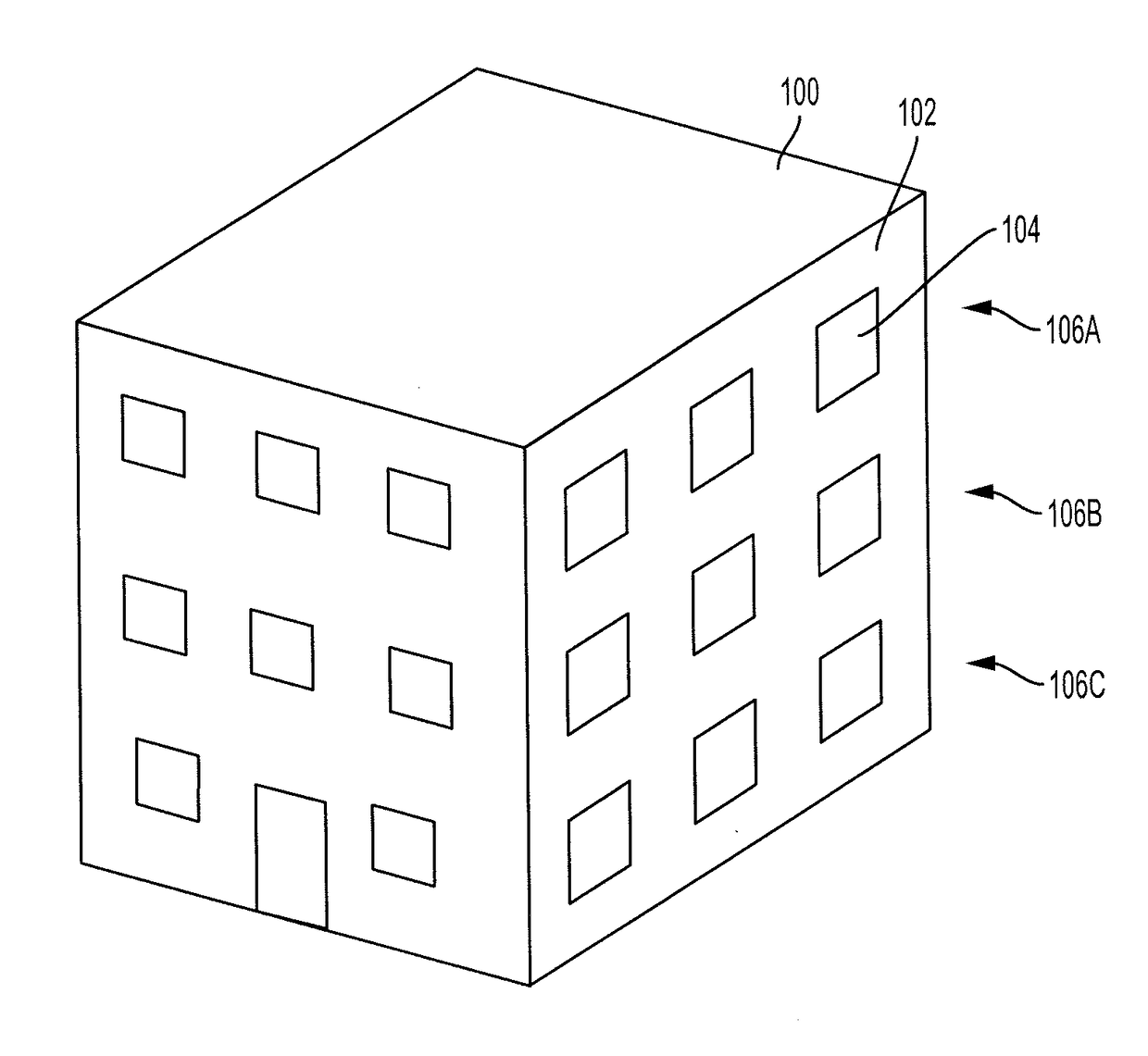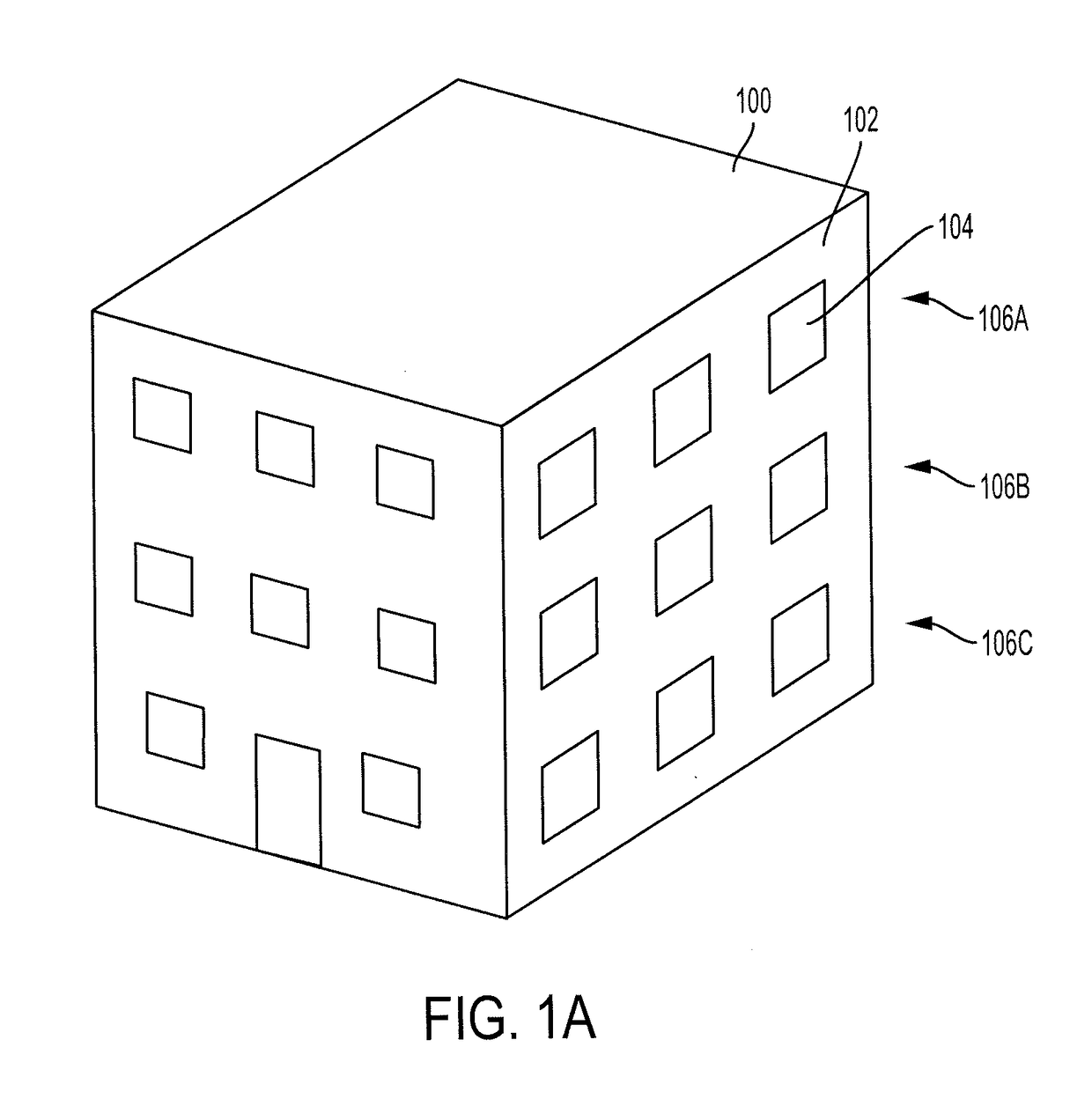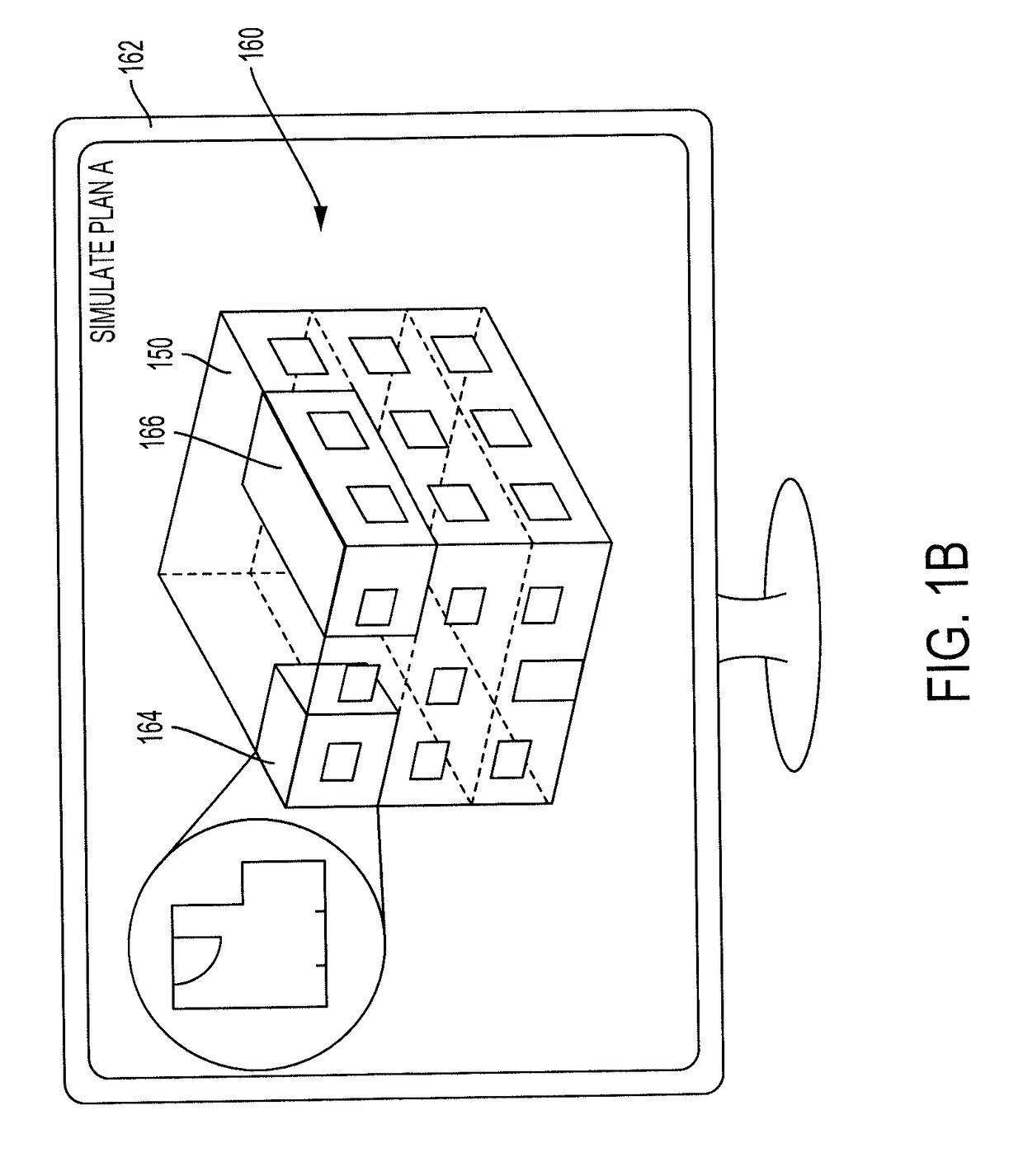System and method for calibrating multi-level building energy simulation
a multi-level building and energy simulation technology, applied in the field of building energy use simulation, can solve the problems of affecting the design and implementation of ecms, affecting the energy use of buildings, and noticeable differences between simulation results and actual measurements, so as to simulate energy use in buildings, and minimize discrepancies at the plurality
- Summary
- Abstract
- Description
- Claims
- Application Information
AI Technical Summary
Benefits of technology
Problems solved by technology
Method used
Image
Examples
Embodiment Construction
[0027]In the following detailed description, numerous specific details are set forth to provide an understanding of the present disclosure. It will be apparent, however, to one of ordinarily skilled in the art that elements of the present disclosure may be practiced without some of these specific details. In other instances, well-known structures and techniques have not been shown in detail to avoid unnecessarily obscuring the present disclosure.
[0028]In general, energy model calibration is a context-related process involving many input parameters. In order to calibrate an energy model for a building, input values may be tuned to reconcile the output by a simulation program as closely as possible to detected energy data. There may be a large number of independent and interdependent input parameters to be specified, which represent the complex correlations and dynamic interactions among envelope thermal conditions, HVAC responses, exterior impacts (e.g., solar radiation) and interior...
PUM
 Login to View More
Login to View More Abstract
Description
Claims
Application Information
 Login to View More
Login to View More - R&D
- Intellectual Property
- Life Sciences
- Materials
- Tech Scout
- Unparalleled Data Quality
- Higher Quality Content
- 60% Fewer Hallucinations
Browse by: Latest US Patents, China's latest patents, Technical Efficacy Thesaurus, Application Domain, Technology Topic, Popular Technical Reports.
© 2025 PatSnap. All rights reserved.Legal|Privacy policy|Modern Slavery Act Transparency Statement|Sitemap|About US| Contact US: help@patsnap.com



